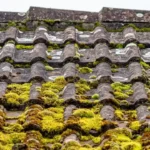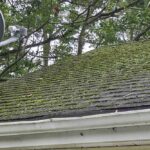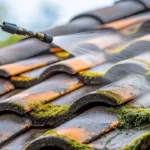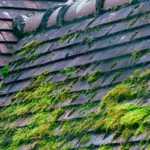In the quest for sustainable living, green roofs and insulation have emerged as pivotal elements. These innovative solutions not only enhance the aesthetic appeal of homes but also significantly contribute to energy efficiency and environmental sustainability. Homeowners and builders alike are increasingly recognizing the importance of these features. This article explores the myriad benefits of green roofs and insulation, offering insights into their impact on your home’s efficiency and the environment.

What are Green Roofs?
Green roofs, also known as living roofs, are rooftops covered with vegetation and soil, or a growing medium, planted over a waterproofing membrane. They may also include additional layers such as a root barrier and drainage and irrigation systems. These roofs are gaining popularity in urban settings for their ability to promote biodiversity and improve air quality.
Types of Green Roofs
There are primarily two types of green roofs: extensive and intensive. Extensive green roofs are lightweight with a shallow growing medium, making them ideal for buildings with limited load capacity. In contrast, intensive green roofs are heavier, supporting a wider variety of plants, including small trees and shrubs, and require more maintenance.
The Role of Insulation in Green Roofs
Insulation is a crucial component of green roofs, serving to enhance their energy efficiency. By reducing the amount of heat that escapes from a building, insulation helps maintain a stable indoor temperature, reducing the need for artificial heating and cooling.
How Insulation Works
Insulation acts as a barrier to heat flow and is essential for keeping your home warm in the winter and cool in the summer. In the context of green roofs, insulation works alongside the vegetation layer to prevent heat loss in cold weather and minimize heat gain during warmer months.
Environmental Benefits of Green Roofs and Insulation
One of the most significant benefits of green roofs and insulation is their positive impact on the environment. By reducing energy consumption, they help decrease the carbon footprint of buildings, contributing to a more sustainable future.
Reducing Urban Heat Island Effect
In urban areas, the heat island effect is a common problem where concrete and asphalt absorb and retain heat, leading to higher temperatures. Green roofs help mitigate this effect by providing a cooling effect through evaporation and shading.
Improving Air Quality
Plants on green roofs absorb carbon dioxide and other pollutants from the air, releasing oxygen in return. This process not only improves air quality but also supports urban biodiversity by providing a habitat for various species.
Economic Advantages of Green Roofs and Insulation
Beyond environmental benefits, green roofs and insulation offer economic advantages. They can significantly reduce energy costs by lowering the demand for heating and cooling. Additionally, they increase the lifespan of roofing materials by protecting them from extreme weather conditions.
Energy Savings
By maintaining a consistent indoor temperature, green roofs with proper insulation can reduce energy use by up to 75%. This results in substantial savings on utility bills, making them an economically sound investment.
Extending Roof Life
The vegetative layer of green roofs protects the underlying roofing materials from UV rays and temperature fluctuations, extending the roof’s life by up to 20 years.
Installation and Maintenance of Green Roofs
Installing a green roof involves several steps, including assessing the building’s load capacity, selecting appropriate plants, and ensuring proper drainage and irrigation systems are in place. While installation can be costly, the long-term benefits often outweigh the initial investment.
Maintenance Requirements
While extensive green roofs require minimal maintenance, intensive green roofs need regular care, including watering, fertilizing, and weeding. Regular maintenance ensures the roof remains healthy and functional.
Case Studies and Real-World Examples
Several successful projects demonstrate the effectiveness of green roofs and insulation. For instance, the Chicago City Hall’s green roof has become a model for urban sustainability, significantly reducing the building’s energy costs and improving the surrounding air quality.
Residential Green Roofs
Homeowners are increasingly adopting green roofs to enhance their homes’ energy efficiency and aesthetic appeal. These roofs not only improve the property’s value but also contribute to a healthier living environment.
Challenges and Solutions in Green Roof Installation
Despite their benefits, installing green roofs can present challenges, such as higher upfront costs and structural requirements. However, government incentives and advances in technology are making them more accessible to homeowners.
Overcoming Cost Barriers
Many governments offer incentives for installing green roofs, including tax breaks and grants, which can help offset the initial costs. Additionally, the long-term savings on energy bills make them a financially viable option.
Structural Considerations
Before installation, it’s essential to ensure the building can support the additional weight of a green roof. Consulting with structural engineers can help address these concerns and ensure a safe installation.
Future Trends in Green Roofs and Insulation
The future of green roofs and insulation looks promising, with innovations in materials and design enhancing their efficiency and appeal. Researchers are exploring new plant species and growing mediums that require less maintenance and offer improved performance.
Innovations in Materials
Advancements in roofing materials, such as lightweight substrates and improved waterproofing membranes, are making green roofs more accessible and effective.
Design Innovations
Innovative designs, such as modular green roof systems, are simplifying the installation process, allowing homeowners to customize their roofs based on their needs and preferences.
Conclusion: The Bright Future of Green Roofs and Insulation
As we move toward a more sustainable future, the role of green roofs and insulation in residential buildings cannot be overstated. They offer a multitude of benefits, from reducing energy consumption to improving air quality and enhancing property value. By investing in these technologies, homeowners can contribute to environmental sustainability while enjoying significant economic savings.
For more information on green roofs and how they can benefit your home, visit HowStuffWorks.

FAQ
What are the main benefits of green roofs?
Green roofs provide numerous benefits, including improved energy efficiency, reduced urban heat, enhanced air quality, and extended roof lifespan.
How do green roofs contribute to energy savings?
By providing additional insulation, green roofs reduce the need for heating and cooling, leading to significant energy savings.
Are green roofs expensive to install?
While the initial costs can be high, government incentives and long-term energy savings often offset these expenses, making green roofs a worthwhile investment.
This article contains affiliate links. We may earn a commission at no extra cost to you.








